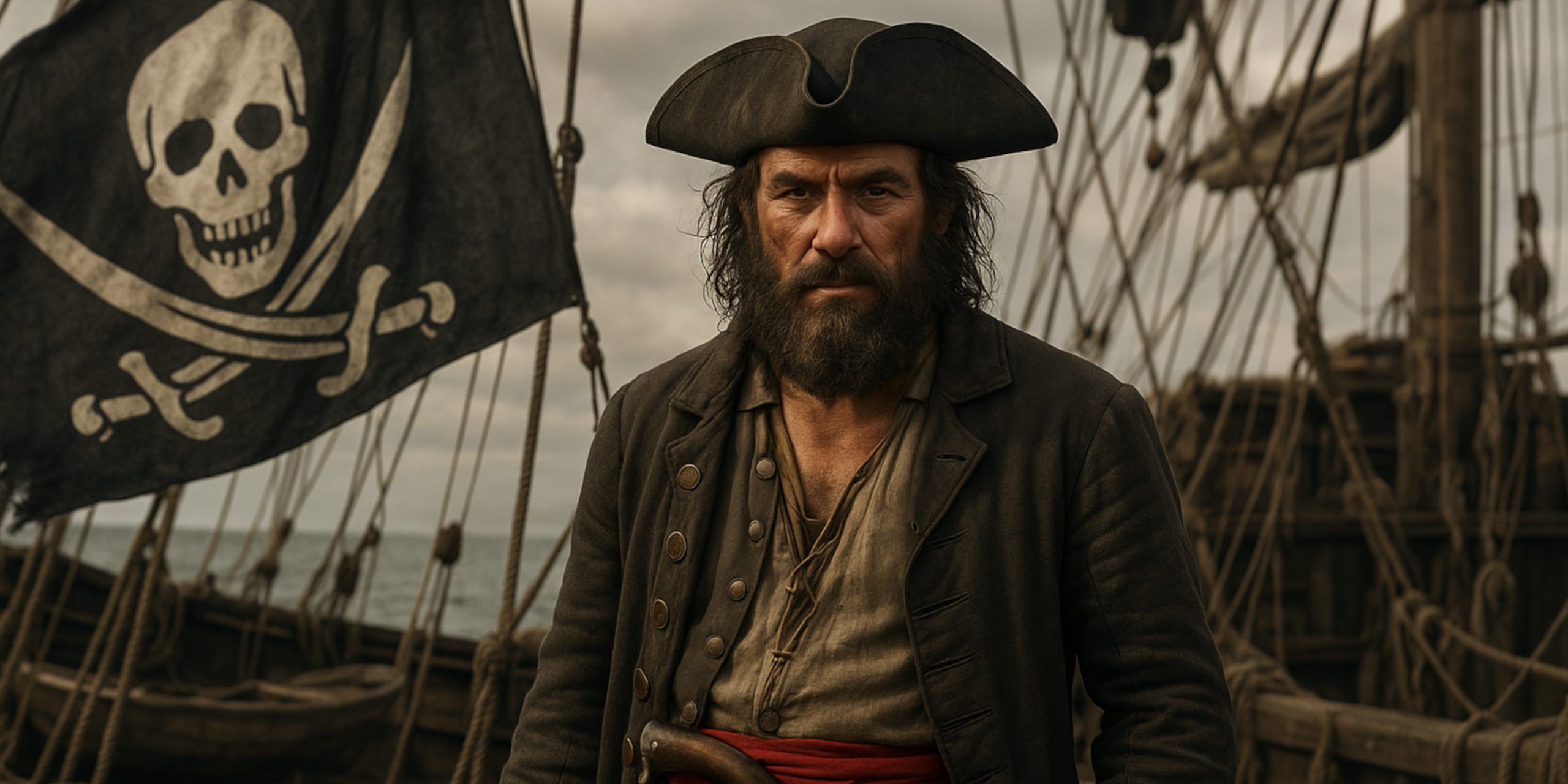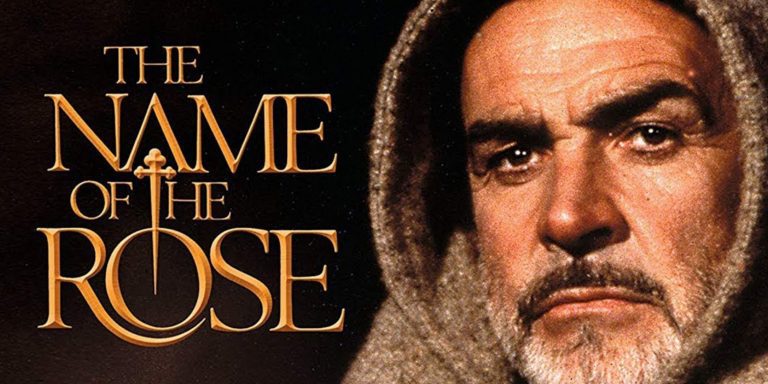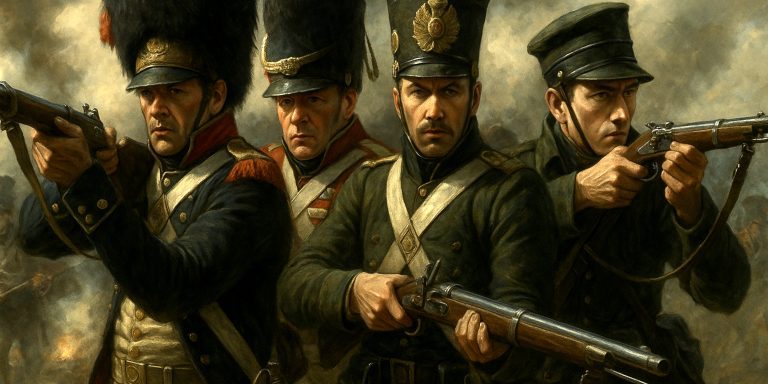
Pirates from the so-called Golden Age (roughly 1650 to 1730) have been endlessly romanticised in books, films and pop culture. Some stories are rooted in truth, others are pure invention, and plenty fall somewhere in between. Let’s set the record straight with seven facts and seven myths about the real men and women who terrorised the seas.
Facts About Golden Age Pirates
1. Pirates had democratic crews
Captains were often elected, and decisions such as routes, raids and punishments could be voted on. For many sailors fleeing rigid naval life, piracy was surprisingly fair.
2. Pirate codes were real
Crews signed articles outlining how loot would be divided, rules of conduct and punishments for breaking them. These weren’t just ideas, they were binding contracts.
3. Pirates flew more than just the skull and crossbones
The Jolly Roger varied widely. Some flags showed skeletons, hourglasses or bleeding hearts. Each design carried a threat meant to terrify opponents into surrender.
4. Female pirates existed
Anne Bonny and Mary Read are the most famous examples, but there were others. They disguised themselves as men or used connections to carve out space in a brutal world.
5. Ships were often captured merchant vessels
Most pirates didn’t build ships from scratch. They took over fast merchant ships and armed them for raiding, making use of what was already on the seas.
6. Pirate havens thrived
Places like Nassau in the Bahamas became semi-autonomous pirate republics, complete with taverns, markets and a degree of self-rule until crushed by colonial powers.
7. Punishments for captured pirates were brutal
Hanging was the most common end. Some were left in gibbets along harbours as a warning to others. Romance and swagger disappeared quickly when justice caught up.
Myths About Golden Age Pirates
1. Pirates buried treasure
The image of a chest of gold marked with an X on a map is fiction. Treasure was usually spent quickly on food, drink, and indulgence. Only Captain Kidd is rumoured to have buried loot, and even that is disputed.
2. Pirates spoke in “Arrr” accents
The exaggerated West Country accent was popularised by Robert Newton’s performance as Long John Silver in the 1950 film Treasure Island. Real pirates came from across Europe and the Americas, with no uniform speech.
3. Wooden legs and eyepatches were everywhere
While some injured sailors certainly wore them, the idea that half the crew looked like a prosthetic shop window is an exaggeration. Most pirates died from wounds before prosthetics came into play.
4. Pirates forced victims to walk the plank
It sounds dramatic but there’s no reliable historical evidence. More common punishments included marooning someone on a deserted island or simply killing them outright.
5. Every pirate was a ruthless killer
Many relied on intimidation. Raising a fearsome flag and firing warning shots often secured surrender without bloodshed. Violence was a last resort since damaged prizes were less profitable.
6. All pirates were lawless outcasts
Plenty were former sailors from merchant ships or navies, driven to piracy by poor pay, harsh conditions, or wartime unemployment. Many had families and connections back on shore.
7. Pirates dressed like stage performers
The bandanas, striped shirts and gold earrings owe more to theatre and costume designers than history. Most pirates wore practical seafaring clothes, though officers might flaunt captured finery.
The Seven Swords Takeaway
The Golden Age of Piracy was colourful enough without the embellishments. There were indeed fearless captains, wild port towns and codes of honour, but also filth, hunger and short lives. The myths make for good entertainment, yet the truth is often more interesting. Real pirates lived fast, died young, and didn’t waste time drawing treasure maps.



